January is National Soup Month and a great time to make a large hot kettle of soup to warm you up and have ready for quick meals during the week.
Soups require special food safe cooling and storage procedures, so as to prevent food illness.
Likewise, plan to eat refrigerated soup within 3 to 4 days, or freeze it. And avoid letting soup set at room temperature for more than 2 hours.
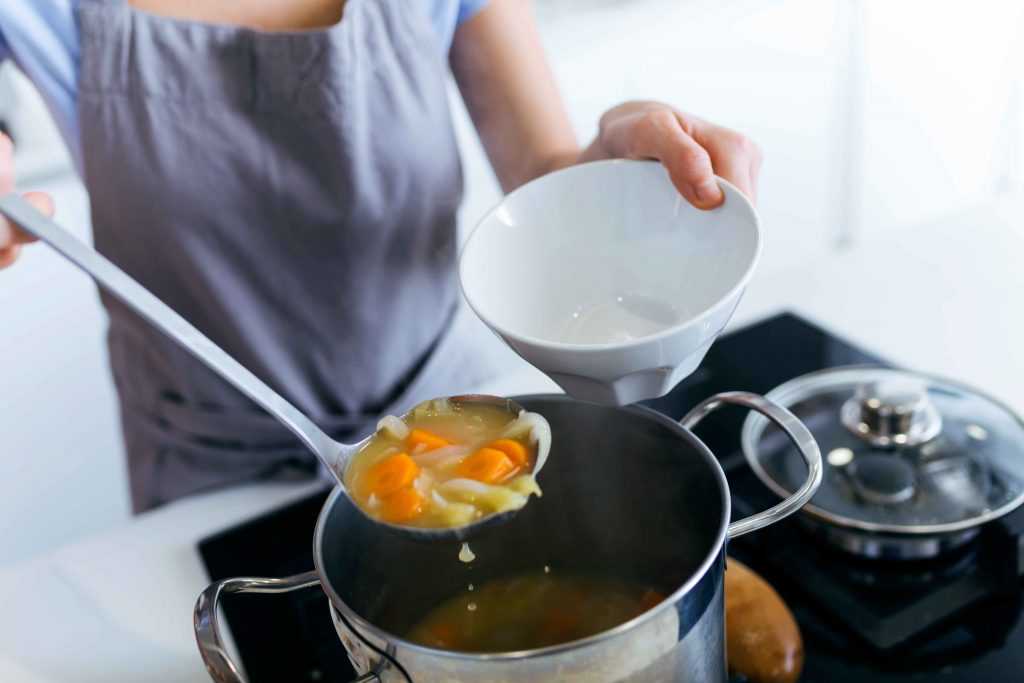 Image Source: Shutterstock
Image Source: Shutterstock Hot foods bound for the refrigerator or freezer must be cooled quickly for two reasons. First, a quick cool decreases the chance for harmful bacteria to grow, keeping your food safe to eat. Second, in the case of freezing, cool food will freeze faster, preventing the formation of large ice crystals that may ruin the flavor and texture of foods.
- Learn about foodborne pathogens, cross contamination, cold and hot food safety, and best practices to prevent foodborne illness.
- Food Manager ANSI Certification: $99.00 - Valid in all States
- Food Handler Training: Only $7.00!
- 10% OFF: Enter Promo Code "train10off" at Checkout
Soup Safe Cooking Temperature
The desired cooking temperature of soup from a food safety standpoint is 165°F – but to be sure – soups can be cooked to near boiling temperature (212°F).
Culinary experts recommend the following soup temperatures for quality:
- Hot Clear Soups: serve near boiling 210°F (99°C)
- Hot Cream or Thick Soups: serve between 190°F to 200°F (88°C to 93°C)
- Cold Soups: heated, then cooled and served at 40°F (4°C) or lower
When serving hot soups, always make sure to serve the soup in warmed bowls so the soup stays hot on its way to the table; likewise, cold soups should be served in chilled bowls.
Reheating
When serving soup a second time, reheat it until it’s steaming hot throughout, at least 165 F.
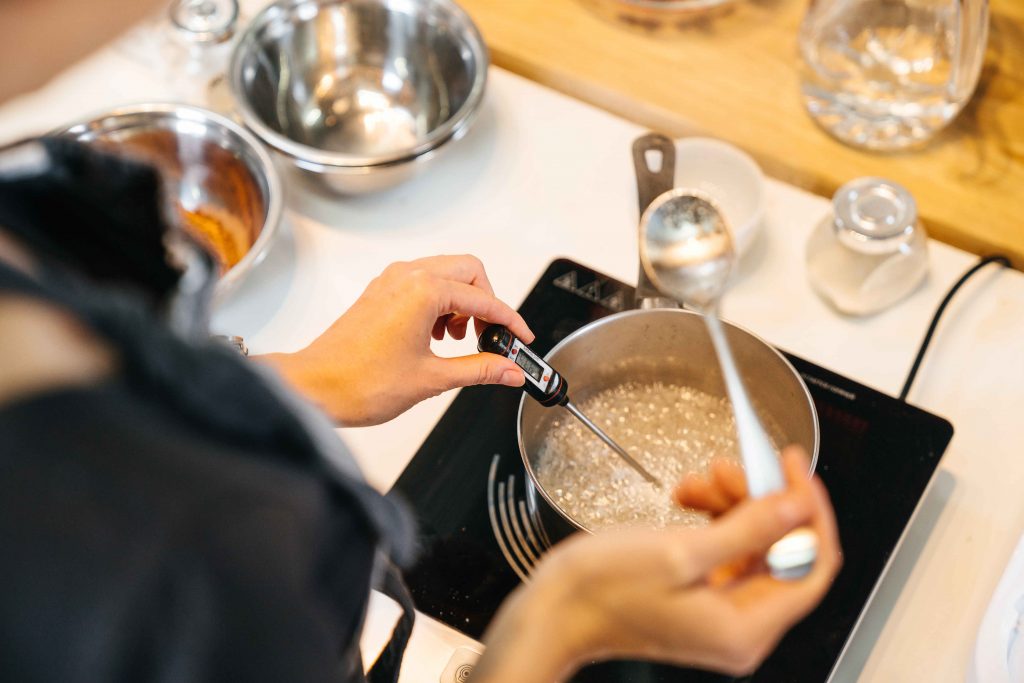 Image Source: Shutterstock
Image Source: Shutterstock Temperature Danger Zone
One of the leading causes of foodborne illness is the failure to properly cool foods. The food danger zone is that temperature between 40°F and 140°F where pathogens grow most quickly.
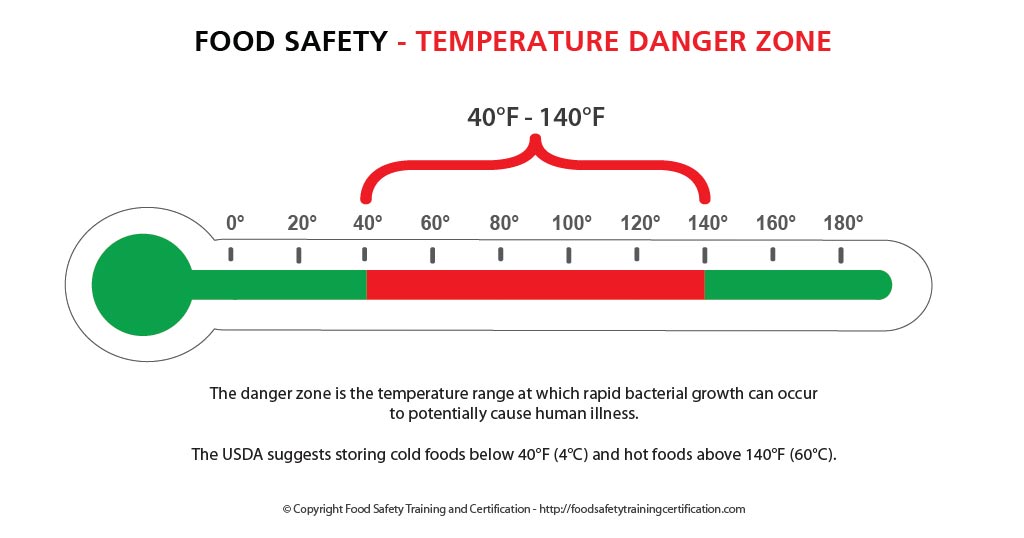
2-Stage Food Safe Cooling
It can take a long time to get through the danger zone when cooling a large batch of chili, soup, or stew. To be safe, food must:with
- Cool down from 140°F to 70°F within 2 hours; and
- Cool down from 70°F to 40°F or below within 4 hours.
Initial 2-hour Cool is Critical
The initial 2-hour cool is the most critical time period since the food is passing through the temperature range that supports the most rapid microorganism growth. If food has not reached 70°F within 2 hours, it must be reheated to 165°F for 15 seconds, and then cooled again or thrown away.
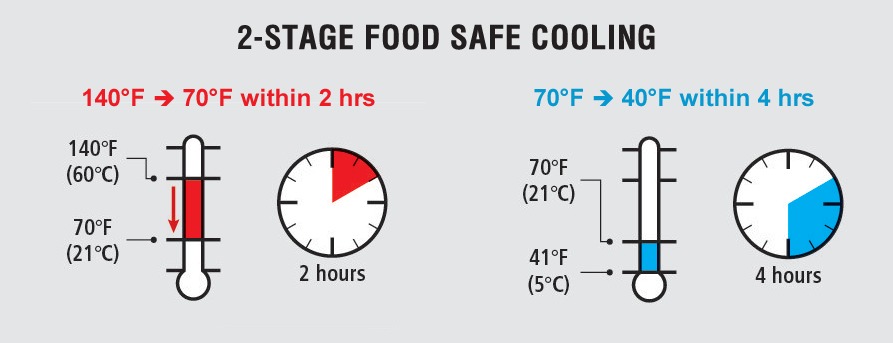
Use Shallow Containers for Safe Cooling
According to the USDA, it takes 24hrs to cool an 8-inch stock pot of steaming chicken soup to a safe temperature in your refrigerator.
For safety and for speed cooling, transfer soup to shallow containers, making sure soup is no more than 2″ deep. Refrigerate promptly. You can place loosely covered foods in the refrigerator while still warm; cover when food is completely cooled.
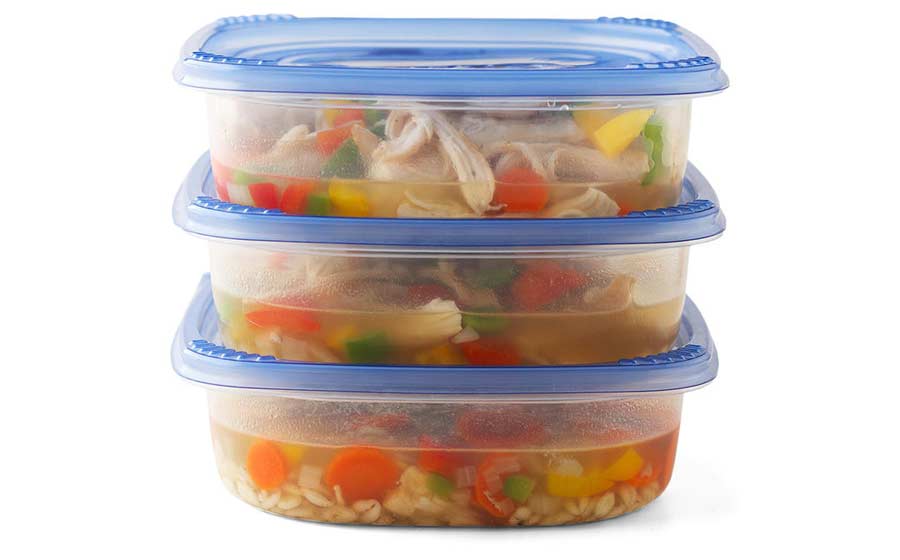 Image Source: Shutterstock
Image Source: Shutterstock Rapid Cooling Techniques for Large Batches
Be proactive about cooling soup. When making a large batch of soup, plan ahead for the cooling method you plan to use. Begin your plan by having an accurate food thermometer to keep tabs on the temperature during the cooling process.
Follow the following methods and procedures to safely cool your soup:
-
- Use ice water bath – An ice water bath is effective for cooling soups. This method helps decrease the food temperature quickly and safely. Fill a large container or clean sink with ice and a small amount of water. Place the kettle of soup into the ice bath. Stir the soup to release heat and aid cooling.
- Use shallow pans – The smaller the portions, the quicker the cool down.Don’t leave a large pot of soup on the counter to cool before placing in the fridge.Separate into smaller containers, no deeper than 3 inches. Stir occasionally to aid cooling.
- Use ice in the recipe – You can reduce cooling time by adapting your soup recipe. Prepare a thicker soup, reducing the original amount of water or liquid called for in the recipe. Add ice to the soup at the final preparation step.
- Use cooling paddles – These are more commonly used in a commercial kitchen. The cooling paddle is filled with water and placed in the freezer. Stir the soup, in the kettle with the frozen chill paddle. Shop for Cooling Paddles on Amazon
After Soup is Cooled
Once the soup is cooled to 70°F, by using a rapidly cooling option, you can place the container of soup in the refrigerator. Place on the top shelf. Leave uncovered until cooled to 40°F. Consume or freeze leftovers within 4 days of preparation.
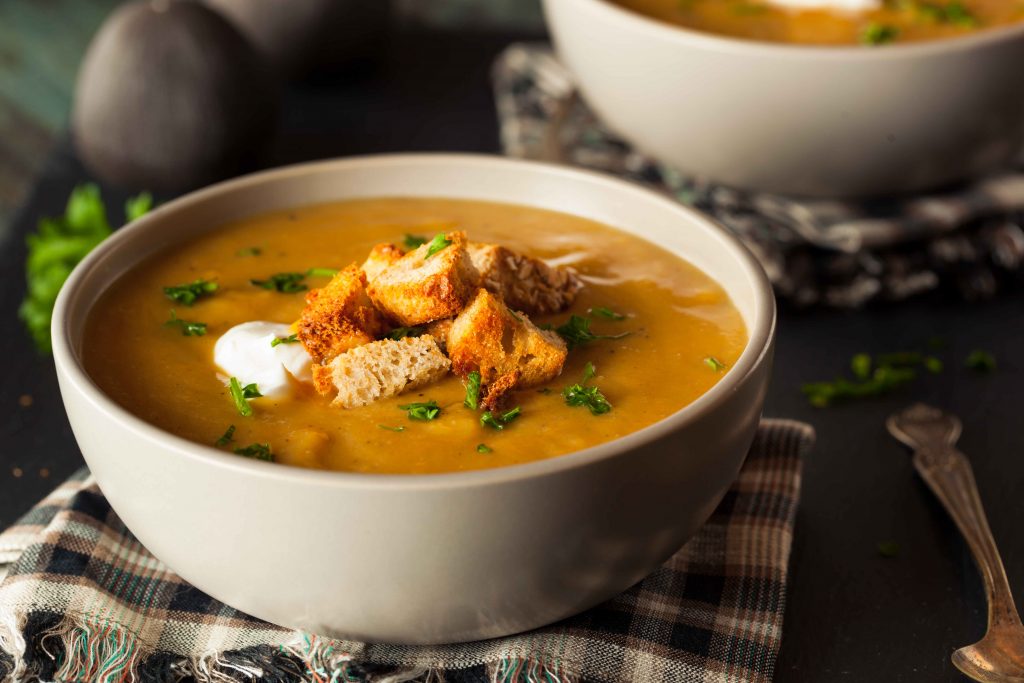 Image Source: Shutterstock
Image Source: Shutterstock Summary
Soups require special food safe cooling and storage procedures, so as to prevent food illness.
Hot foods bound for the refrigerator or freezer must be cooled quickly, so as to decrease the chances for harmful bacteria to grow, keeping your food safe to eat.
Likewise, plan to eat refrigerated soup within 3 to 4 days, or freeze it. And avoid letting soup set at room temperature for more than 2 hours.
